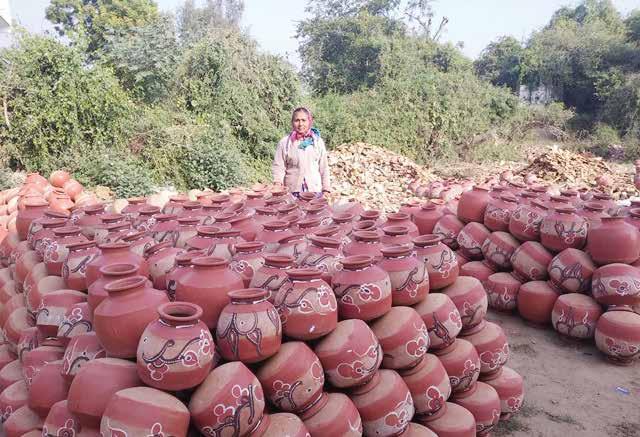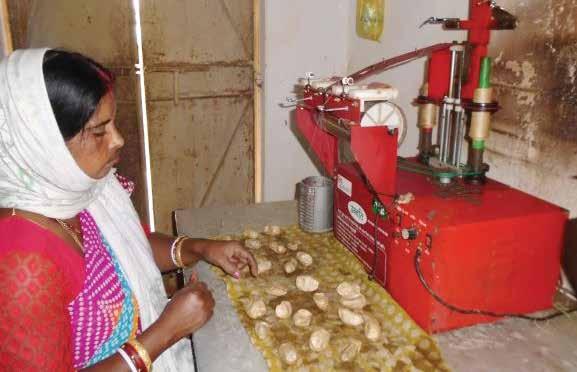22
Study the Feasibility and Potential of Solar Applications in Micro, Small and Medium Enterprises in Rural India
Production process The process of weaving a saree or any textile on the powerloom involves sequential steps; first of which is finalizing the design, colour, and material to be used. Next, threads are warped on to the weaver’s beam by skilled artisans. The beam is inserted into the loom and filling or weft threads are interlaced perpendicularly to the warped threads. A jacquard machine in a powerloom helps recreate designs and patterns on the surface of the woven fabric. The final step involves finishing the woven textile using the wax process.
Energy consumption In the studied cluster, the electrical capacity of motor used in individual powerloom is around 0.75 HP. Thus, for multiple looms operating within the same unit, the cumulative capacities of all motors range from 2.25 HP to 6 HP. All the studied units run their machines for around 10 hours daily. Units with three or four looms in operation consumed between 16 and 22 kWh of power per day, while the larger units having six and eight looms were found to consume 33 kWh and 45 kWh per day, respectively. The monthly electricity charges are subsidized approximately 60% by the Department of Handloom and Textiles (DoHT) of Karnataka to support the powerloom units. The average electricity bill across the units in the studied cluster has been provided in Table 3.
Daily power supply has been regular except occasional power cut for around 1–2 hour. The power cut increases up to 2–3 hour in the rainy and summer seasons during which the productivities are partially affected. Though the overall power supply is satisfactory in the region, power generation from solar would further reduce the power subsidy burden of the department. The weavers interviewed in the studied cluster expressed their interest in exploring the option of solar PV to reduce their current electricity bill. They were also willing to provide the available space for installation of the system and make partial capital contribution.
Design of solar PV In this cluster, grid-fed individual solar PV system has been proposed (without battery back-up) for each and every powerloom unit. The design of the system has been done considering the space constraint and investment capacity of the studied cluster. Thus, it has been assumed that 50% of the energy will be met through solar and the balance 50% will be met through the grid. The solar systems for micro units (3 looms) and small unit (4 looms) have been proposed for 3 kWp and 4 kWp, respectively. Similarly, the capacity for solar system for medium units (6 looms) and large units (8 looms) have been proposed for 6 kWp and 8 kWp, respectively. The area needed for
TABLE 3: Electricity bills of powerloom units without subsidy
Categorization of powerloom unit
Monthly average electricity bill (INR)
Large (8 looms/unit)
7000 to 9000
Medium (6 looms/unit)
4000 to 5000
Small (4 looms/unit)
3000 to 4000
Micro (3 looms/unit)
2500 to 3000






